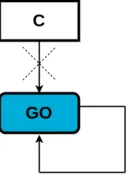Hey Go Developers!, Here’s How That’s possible
Listen to the Blog and Follow Along with the Transcript
Have you ever wondered how Go compiles itself? It’s a bit of a chicken-and-egg situation. How do you build a compiler for a language that doesn’t exist yet? Did the Go creators build it with duct tape and hope? Or maybe hire some coding wizards?
Not quite! The answer lies in something called a self-hosting compiler, and the story of how Go got there is pretty fascinating—and surprisingly straightforward.
Go’s Early Days: Starting with C
When Go was first created in 2007, there was no Go compiler written in Go. (Because, well, Go didn’t exist yet.) The Go team—Robert Griesemer, Rob Pike, and Ken Thompson—needed a way to get started. So, they used C to write the first Go compiler.
This C-based compiler was like Go’s “first draft.” It gave the team the ability to build the language and start working on the Go standard library. Most importantly, it gave them the tools they needed to write a Go compiler… in Go itself.
Think of the C compiler as training wheels. It wasn’t the end goal, but it got the job done.
Go Learns to Compile Itself
Once the team had a Go compiler written in Go, they used the original C-based compiler to compile it. That Go compiler then started compiling itself.
This process, called bootstrapping, is kind of like teaching a robot to build an upgraded version of itself. At first, you need some external help (in this case, C), but eventually, the robot—or in this case, Go—can handle everything on its own.
After that big step, the Go compiler no longer needed the C version. It was fully self-hosting, meaning Go could compile Go.

Why Is This Important?
So why go through all this effort? Here’s why it matters:
- It Proves Go’s Power: If Go can handle something as complex as compiling itself, it can definitely handle your apps, services, or whatever big ideas you’re building.
- Better Performance: A Go compiler written in Go can take advantage of Go’s features to make itself faster and more efficient.
- Easier to Maintain: Writing the compiler in Go makes it easier to work on and improve. No need to switch between Go and C code.
- Dogfooding: By using Go to build Go, the language developers get firsthand experience with what works, what doesn’t, and what needs improvement.
What Happened to the C Compiler?
The original C compiler hasn’t disappeared completely—it’s still in Go’s code repository, mostly as a historical artifact. But in everyday use, it’s all Go now. Every time you run go build, it’s Go compiling Go.
Go’s Self-Made Journey
The self-hosting nature of Go is one of those things that quietly shows off how mature and capable the language really is. It’s a huge milestone for any programming language and a sign of just how far Go has come since its early days.
So, next time you’re writing Go code, take a second to appreciate its journey from a C-based prototype to the self-sufficient powerhouse it is today.





